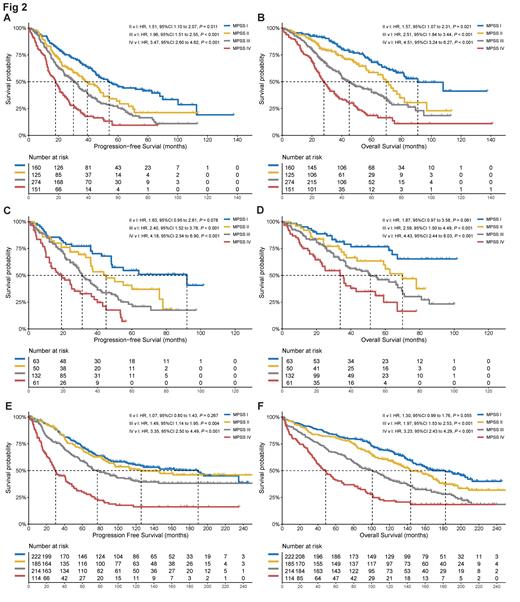Introduction
Multiple myeloma (MM) is a malignancy of terminally differentiated antibody-secreting plasma cells in the bone marrow with highly variable survival outcomes. Precise risk stratification not only plays a vital role in predicting patient prognoses, but critically can be used to develop risk-adapted treatment regimens. However, current risk stratification models do not adequately account for the heterogeneity of patients with new-diagnosed multiple myeloma (NDMM).
Methods
In this retrospective, multicohort study, we collected clinical data from 1792 NDMM patients and formulated a weighted Myeloma Prognostic Score System (MPSS) risk model to predict overall survival (OS). Construction of the MPSS model was carried out based on the National Longitudinal Cohort of Hematological Diseases in China (NCT04645199) cohort, external validation cohort was created using TT2, TT3a, and TT3b cohorts from a series of randomized prospective studies from the University of Arkansas for Medical Sciences (UAMS).
Results
Each risk factor was defined as its weighted value respectively according to their hazard ratio for OS (thrombocytopenia 2, elevated LDH 1, ISS III 2, one high-risk cytogenetic aberration [HRA] 1, and ≥2 HRA 2 points). In the training cohort, patients were furtherly stratified into four risk groups: MPSS I (22.5%, 0 points), II (17.6%, 1 points), III (38.6%, 2-3 points), and IV (21.3%, 4-7 points). MPSS risk stratification showed optimal discrimination, as well as calibration, of four risk groups with median OS of 91.0, 69.8, 45.0, and 28.0 months, for patients in MPSS I to IV groups (P< 0.001), respectively. Importantly, the MPSS model retained its prognostic value in the internal validation cohort and an independent external validation cohort, and exhibited significant risk distribution compared with conventional prognostic models (R-ISS, R2-ISS, and MASS).
Conclusions
In conclusion, we formulated and validated the MPSS risk model to predict the prognosis of patients with MM using readily available standard clinical and genetic test data. The established MPSS profile shows a better performance in risk discrimination than the current R-ISS, R2-ISS, and MASS. A score-based risk stratification is derived, and identifies patients with high and ultra-high risk of death after diagnosis and may therefore aid the development of more personalized treatment strategies, especially for patients for whom current therapies are likely to fail.
Disclosures
Anderson:Window, Starton: Current equity holder in private company, Current holder of stock options in a privately-held company, Membership on an entity's Board of Directors or advisory committees; Pfizer, Janssen, Astrazeneca, Daewoong, Amgen, Starton, OncoPep, Precision Biosciences, Window Therapeutics, Mana Therapeutics: Membership on an entity's Board of Directors or advisory committees; C4 Therapeutics, Raqia, NextRNA,Dynamic Cell Therapy: Current equity holder in publicly-traded company, Current holder of stock options in a privately-held company, Membership on an entity's Board of Directors or advisory committees; Dynamic Cell Therapies: Current equity holder in private company, Current holder of stock options in a privately-held company, Membership on an entity's Board of Directors or advisory committees; Oncopep: Current equity holder in private company, Current holder of stock options in a privately-held company; NextRNA: Current equity holder in private company.


This feature is available to Subscribers Only
Sign In or Create an Account Close Modal